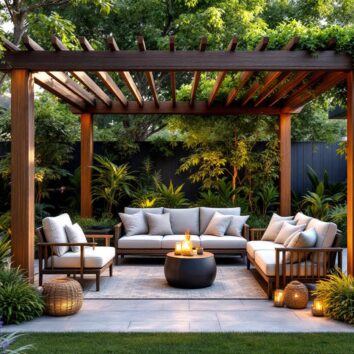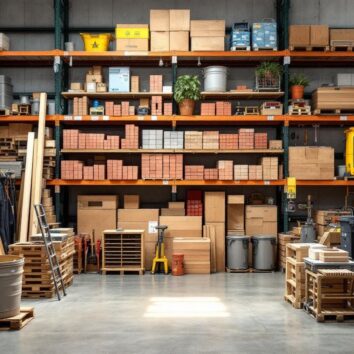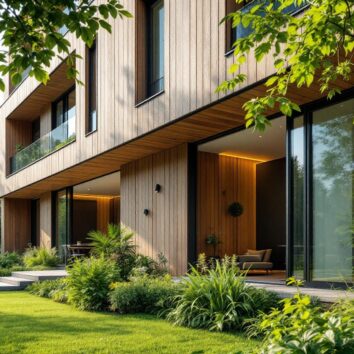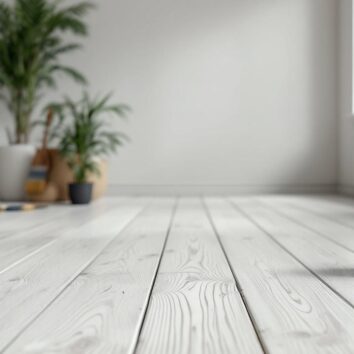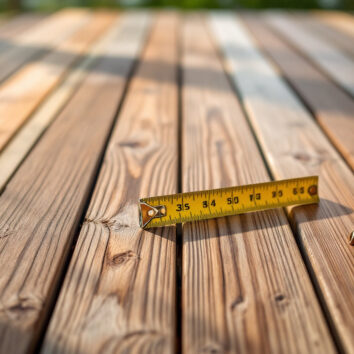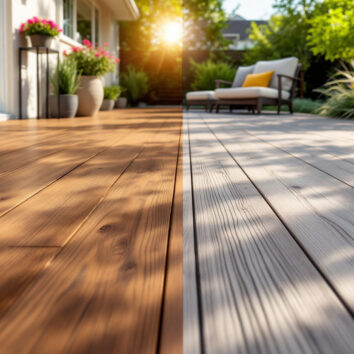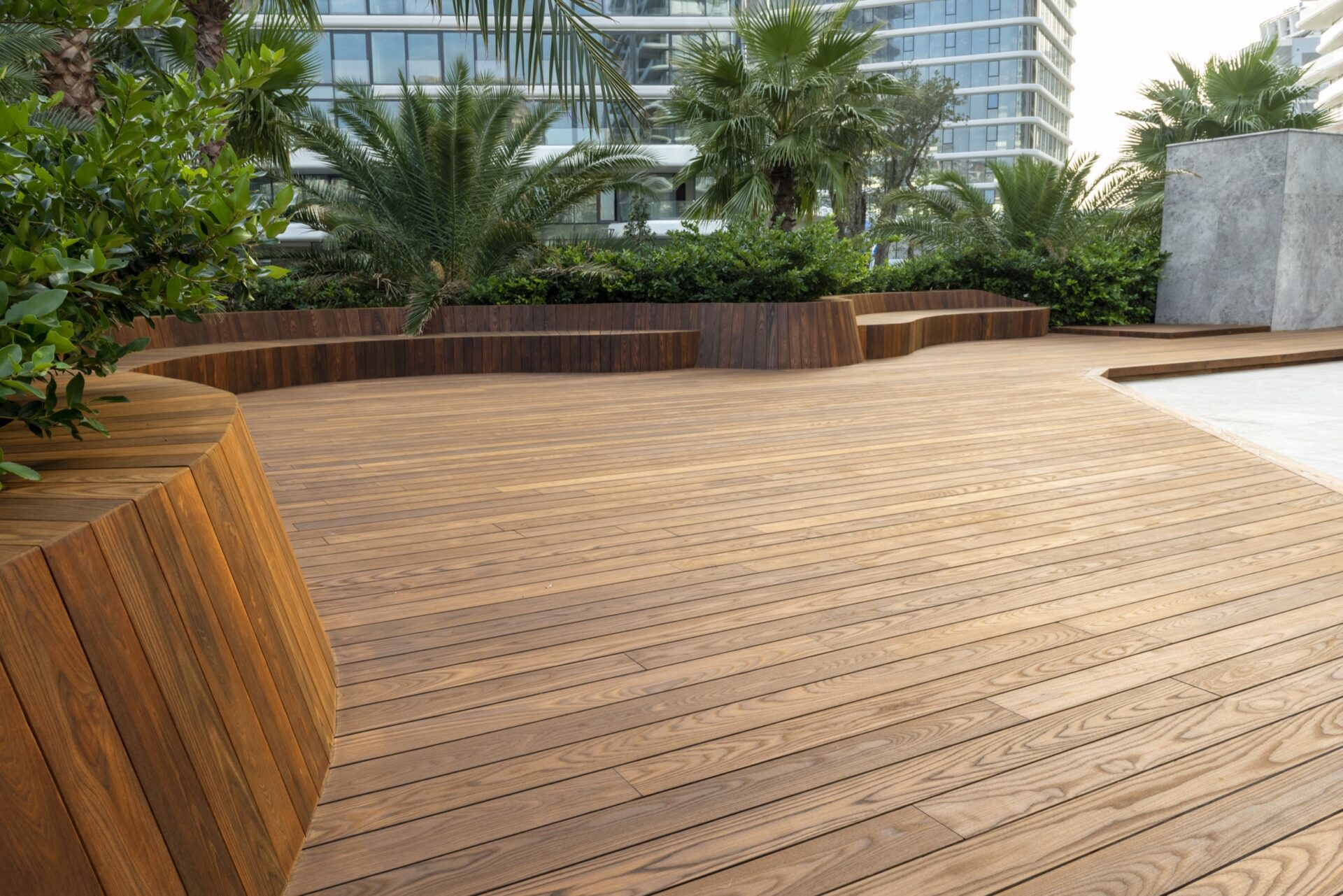
Iron Ash, also known as Jarra or Ironbark in various parts of Australia, is a H3 Treated Victorian Ash hardwood timber native to the eastern states. Renowned for its durability, strength, and striking appearance, Iron Ash has become a preferred choice for a range of construction and design applications. Its dense grain and rich colour palette, ranging from deep reds to warm browns, make it an attractive option for both structural and decorative uses.
In the Australian context, Iron Ash is prized not only for its physical properties but also for its sustainability when sourced responsibly. This article explores the many uses of Iron Ash timber, its benefits, and its environmental impact, providing a comprehensive guide for builders, designers, and homeowners alike.
One of the standout features of Iron Ash timber is its remarkable resistance to decay and insect damage, making it an ideal choice for outdoor applications such as decking, fencing, and landscaping. Its ability to withstand the harsh Australian climate without significant wear or degradation ensures that structures made from Iron Ash can last for decades, providing both aesthetic appeal and functional longevity. Additionally, the timber's natural oils contribute to its resilience, offering an inherent defense against moisture and pests that would typically compromise other wood types.
Beyond its practical applications, Iron Ash timber also holds cultural significance in Australia. Indigenous communities have long utilized this timber for various purposes, from crafting tools to constructing shelters. The rich history of Iron Ash in these communities highlights not only its utility but also its deep connection to the land and its resources. As contemporary builders and designers increasingly seek to incorporate sustainable materials, Iron Ash stands out as a symbol of both innovation and tradition, bridging the gap between modern construction techniques and time-honored practices.
Common Uses of Iron Ash Timber
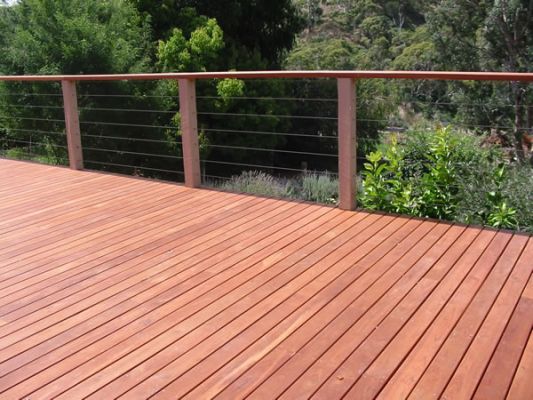
Structural Applications
Iron Ash is widely used in structural timber projects due to its exceptional strength and resistance to wear. It is commonly employed in flooring, decking, and framing, where durability is paramount. Its natural hardness makes it ideal for high-traffic areas and outdoor environments, where it withstands the rigours of weather and heavy use.
In commercial construction, Iron Ash is often selected for beams, joists, and posts. Its ability to bear significant loads without warping or splitting ensures long-lasting structural integrity. These qualities also make it a popular choice for pergolas and decking, especially in Australian climates where exposure to sun and rain is a constant consideration. Additionally, Iron Ash's resistance to moisture makes it suitable for use in areas prone to humidity, such as coastal regions, where other timbers may succumb to rot and decay more quickly.
Furniture and Interior Design
Beyond its structural uses, Iron Ash is favoured in fine furniture making and interior panelling. Its rich hues and fine grain provide a sophisticated aesthetic that complements both modern and traditional decor. Furniture crafted from Iron Ash often showcases the timber’s natural beauty, with finishes that highlight its texture and colour variations. The unique patterns found in Iron Ash can create striking visual interest, making each piece of furniture one-of-a-kind.
Architectural features such as staircases, mouldings, and skirting boards benefit from Iron Ash’s workability and durability. The timber machines well, allowing for detailed carving and shaping, which adds to its versatility in interior design projects. Moreover, its ability to take stains and paints effectively means that designers can achieve a wide range of looks, from a natural finish that emphasizes its organic qualities to bold, vibrant colours that make a statement in any space.
Outdoor Landscaping and Decking
For outdoor landscaping, Iron Ash is an excellent choice due to its natural resistance to decay and insect attack. It is often used in decking, fencing, and garden structures, where longevity and low maintenance are critical. Its ability to withstand harsh weather conditions without significant deterioration makes it a cost-effective option for outdoor applications over time. The timber’s natural oils contribute to its durability, allowing it to resist the damaging effects of UV rays and moisture, which is particularly beneficial for outdoor furniture and structures that are exposed to the elements.
Furthermore, Iron Ash's aesthetic appeal enhances outdoor spaces, providing a warm and inviting atmosphere. When used in garden beds or as part of landscape features, it can blend seamlessly with natural surroundings, creating a cohesive look that enhances the overall design. As sustainability becomes increasingly important in landscaping, Iron Ash is also a preferred choice due to its renewable nature and the responsible forestry practices often associated with its sourcing, making it an environmentally friendly option for conscientious homeowners and landscapers alike.
Benefits of Using Iron Ash Timber
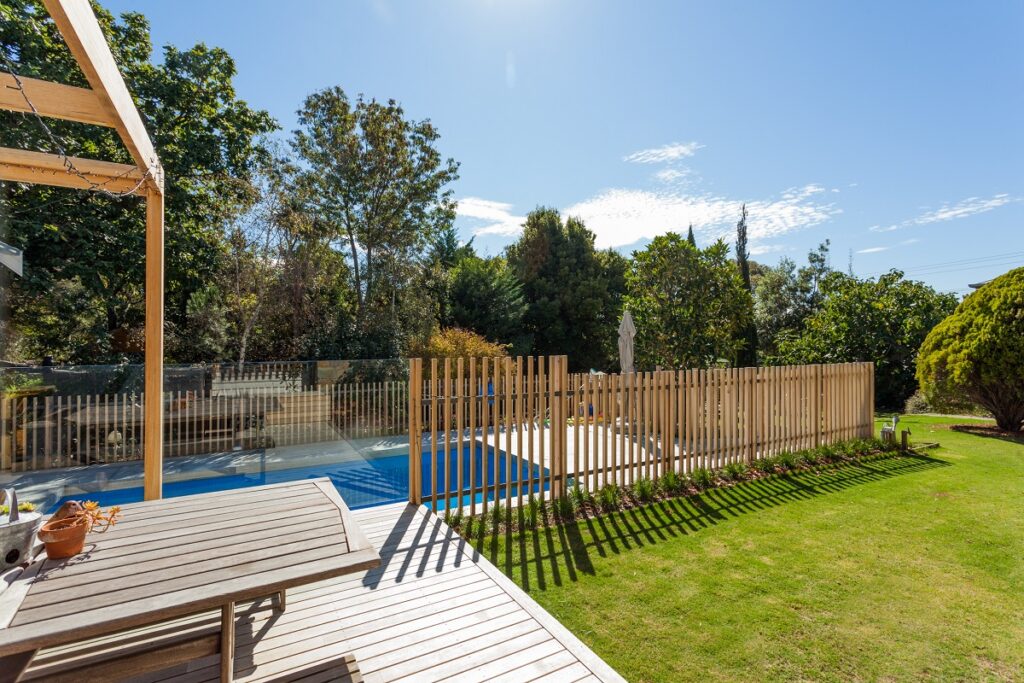
Durability and Strength
One of the standout benefits of Iron Ash is its remarkable durability. This hardwood is dense and tough, offering high compressive and bending strength that surpasses many other Australian native timbers. Its resistance to wear and impact makes it suitable for both residential and commercial projects that demand longevity.
Unlike some softer timbers, Iron Ash does not easily dent or scratch, retaining its appearance and structural integrity for decades. This makes it a reliable choice for flooring and decking, where heavy foot traffic is expected.
Aesthetic Appeal
Iron Ash’s natural beauty is a significant advantage. Its colour ranges from dark reddish-brown to lighter golden tones, often with a striking grain pattern that adds character to any project. When finished with oils or stains, the timber’s rich hues are enhanced, creating a warm and inviting atmosphere.
Its versatility in design means it can be used in both rustic and contemporary settings, making it a favourite among architects and interior designers looking for a timber that combines form and function.
Workability and Versatility
Despite its hardness, Iron Ash is relatively easy to work with using standard woodworking tools. It machines well, allowing for precise cuts and smooth finishes. This workability extends to sanding, staining, and polishing, giving craftsmen and DIY enthusiasts flexibility in their projects.
Its ability to be shaped into various forms without compromising strength makes it suitable for a wide range of applications, from structural beams to intricate furniture pieces.
Longevity and Low Maintenance
Iron Ash timber’s natural oils provide a degree of protection against moisture and pests, reducing the need for chemical treatments. When properly maintained with periodic sealing or oiling, Iron Ash can last for many decades, even in outdoor environments.
This longevity translates to lower long-term costs, as replacement and repair are less frequent compared to less durable timbers. For Australian homeowners and builders, this means a sustainable investment in quality materials.
Environmental Impact and Sustainability
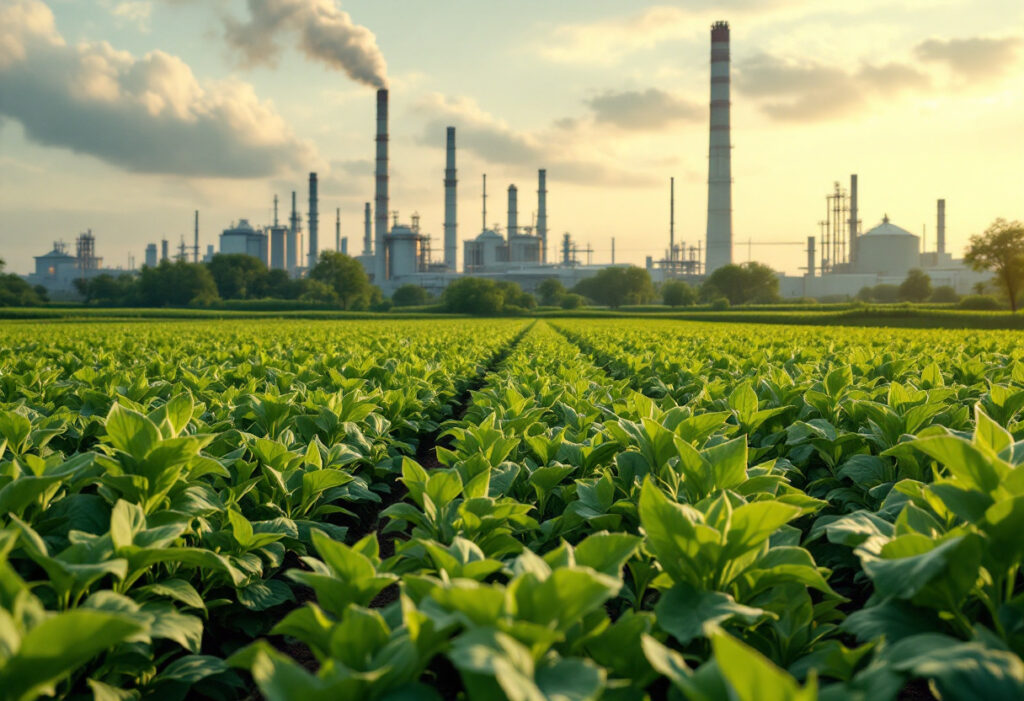
Responsible Sourcing and Certification
In Australia, sustainable forestry practices are crucial to preserving native ecosystems. Iron Ash timber sourced from certified plantations or sustainably managed native forests ensures that harvesting does not compromise biodiversity or forest health. Look for certifications such as the Forest Stewardship Council (FSC) or Australian Forestry Standard (AFS) when purchasing Iron Ash products.
Using responsibly sourced Iron Ash supports the local timber industry while promoting environmental stewardship. It also helps reduce the carbon footprint associated with importing exotic hardwoods from overseas.
Carbon Sequestration and Lifecycle Benefits
Like all timber, Iron Ash acts as a carbon sink, storing carbon dioxide absorbed during the tree’s growth. This natural carbon sequestration contributes to mitigating climate change when timber is used in long-lasting applications. Choosing timber over more carbon-intensive materials like steel or concrete can significantly reduce the environmental impact of construction projects.
Moreover, at the end of its lifecycle, Iron Ash timber can be recycled or repurposed, further enhancing its sustainability credentials.
Comparisons with Other Timbers
Compared to softwoods like pine, which are widely used in Australian construction for their affordability and availability, Iron Ash offers superior durability and aesthetic qualities. While pine is a versatile and cost-effective option, especially for framing and panelling, it lacks the hardness and longevity of Iron Ash, particularly in outdoor or high-wear applications.
On the other hand, hardwoods such as Jarrah and Blackbutt share similar properties with Iron Ash but often come at a higher price point. Iron Ash strikes a balance between cost, performance, and appearance, making it a practical choice for many Australian projects.
Care and Maintenance of Iron Ash Timber
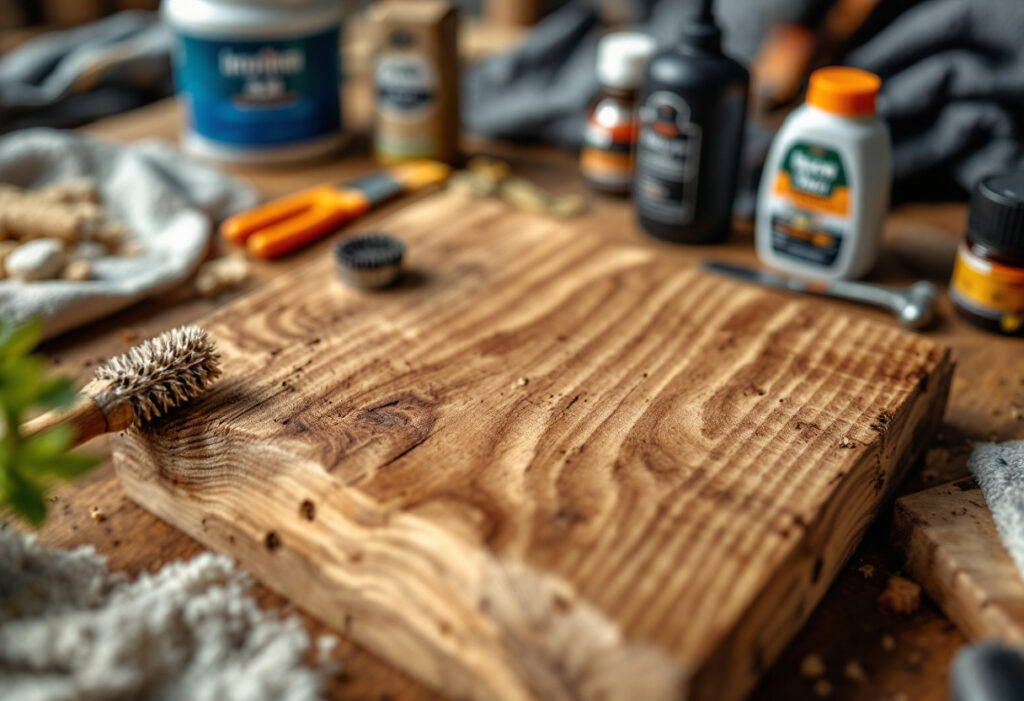
Protecting Against Weather and Wear
To maximise the lifespan of Iron Ash timber, especially in outdoor settings, regular maintenance is essential. Applying a suitable timber oil or sealant helps protect the wood from moisture ingress, UV damage, and fungal decay. This maintenance should be performed every 1-2 years depending on exposure.
For indoor applications, dusting and occasional polishing preserve the timber’s finish and prevent surface wear. Avoiding excessive moisture and direct sunlight will also help maintain the timber’s appearance and structural integrity.
Preventing Cracking and Splitting
Like many hardwoods, Iron Ash can be prone to cracking if subjected to rapid changes in moisture or temperature. To reduce this risk, it is important to acclimatise the timber before installation, allowing it to adjust to the local environment.
Sealing the ends of boards and avoiding prolonged exposure to water will also minimise the likelihood of splitting. Proper installation techniques, including adequate spacing and support, contribute to the timber’s long-term stability.



































